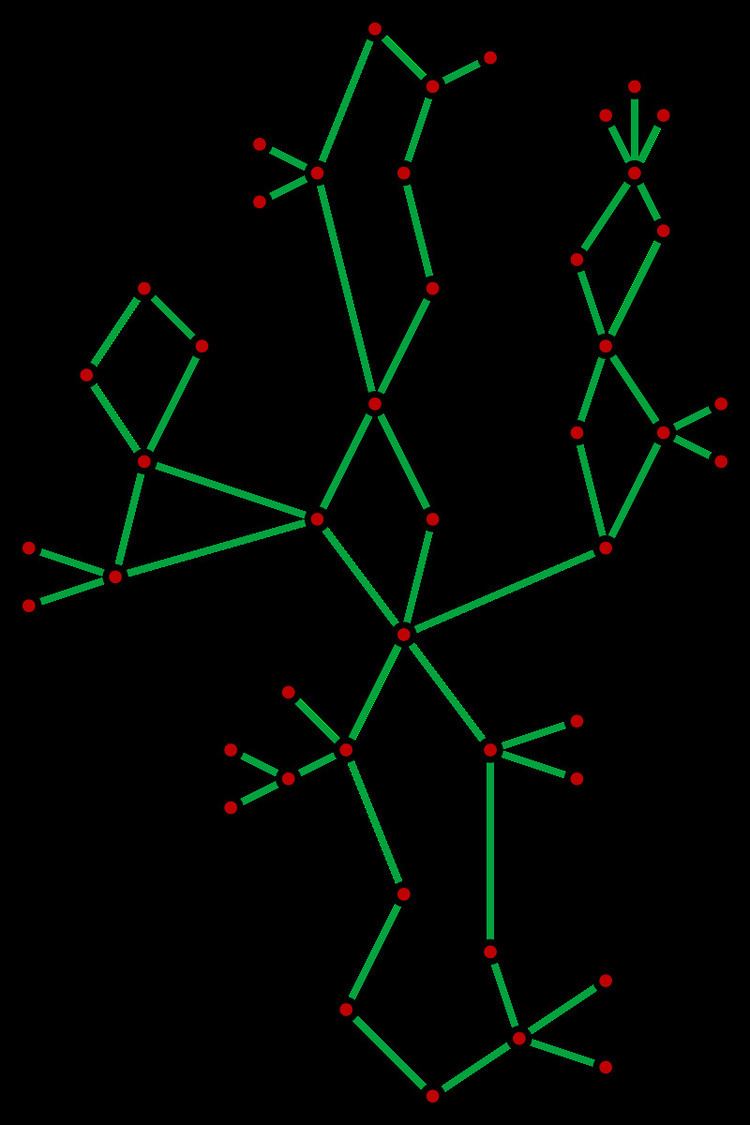 | ||
In graph theory, a cactus (sometimes called a cactus tree) is a connected graph in which any two simple cycles have at most one vertex in common. Equivalently, it is a connected graph in which every edge belongs to at most one simple cycle, or (for nontrivial cactus) in which every block (maximal subgraph without a cut-vertex) is an edge or a cycle.
Contents
Properties
Cacti are outerplanar graphs. Every pseudotree is a cactus. A nontrivial graph is a cactus if and only if every block is either a simple cycle or a single edge.
The family of graphs in which each component is a cactus is downwardly closed under graph minor operations. This graph family may be characterized by a single forbidden minor, the four-vertex diamond graph formed by removing an edge from the complete graph K4.
Algorithms and applications
Some facility location problems which are NP-hard for general graphs, as well as some other graph problems, may be solved in polynomial time for cacti.
Since cacti are special cases of outerplanar graphs, a number of combinatorial optimization problems on graphs may be solved for them in polynomial time.
Cacti represent electrical circuits that have useful properties. An early application of cacti was associated with the representation of op-amps.
Cacti have also recently been used in comparative genomics as a way of representing the relationship between different genomes or parts of genomes.
If a cactus is connected, and each of its vertices belongs to at most two blocks, then it is called a Christmas cactus. Every polyhedral graph has a Christmas cactus subgraph that includes all of its vertices, a fact that plays an essential role in a proof by Leighton & Moitra (2010) that every polyhedral graph has a greedy embedding in the Euclidean plane, an assignment of coordinates to the vertices for which greedy forwarding succeeds in routing messages between all pairs of vertices.
History
Cacti were first studied under the name of Husimi trees, bestowed on them by Frank Harary and George Eugene Uhlenbeck in honor of previous work on these graphs by Kôdi Husimi. The same Harary–Uhlenbeck paper reserves the name "cactus" for graphs of this type in which every cycle is a triangle, but now allowing cycles of all lengths is standard.
Meanwhile, the name Husimi tree commonly came to refer to graphs in which every block is a complete graph (equivalently, the intersection graphs of the blocks in some other graph). This usage had little to do with the work of Husimi, and the more pertinent term block graph is now used for this family; however, because of this ambiguity this phrase has become less frequently used to refer to cactus graphs.
